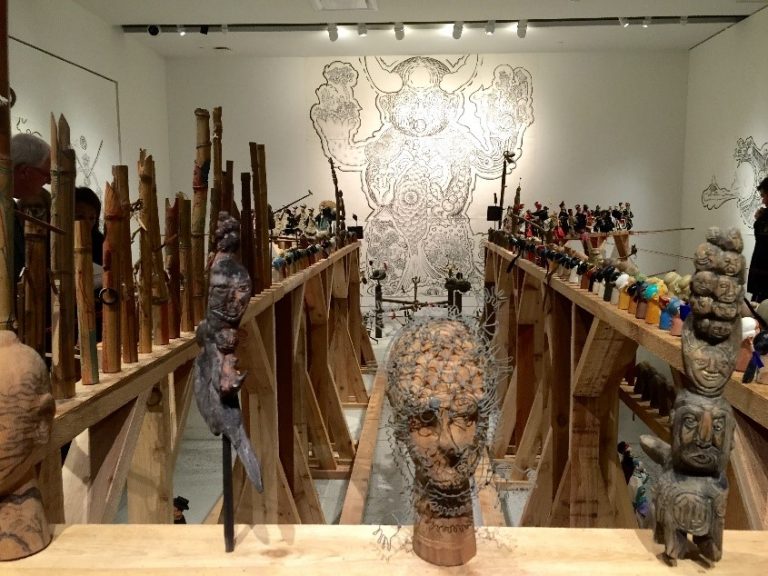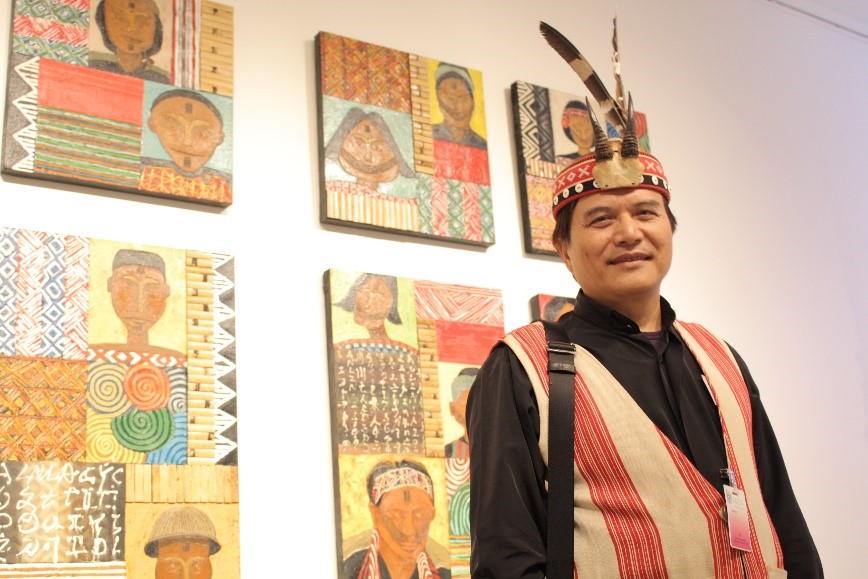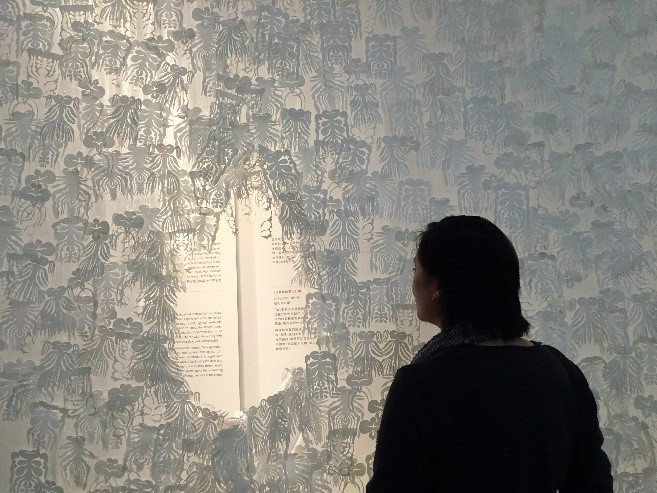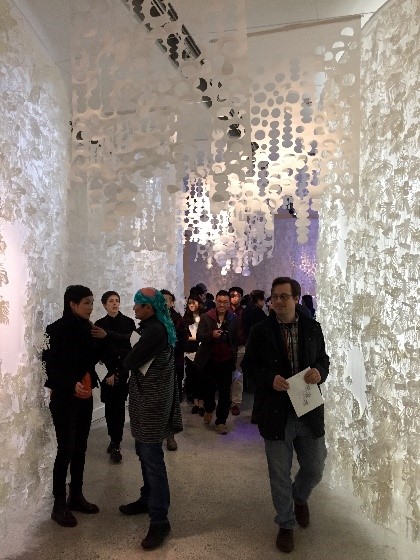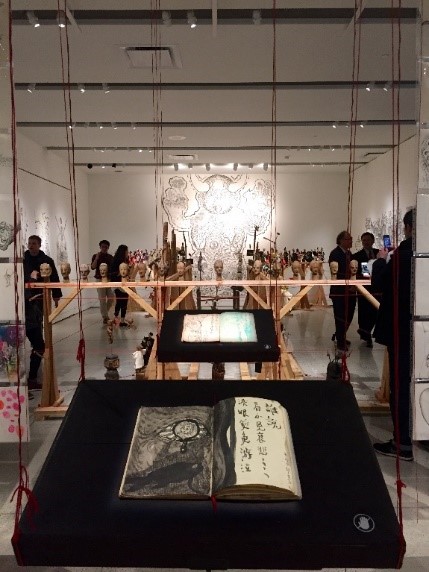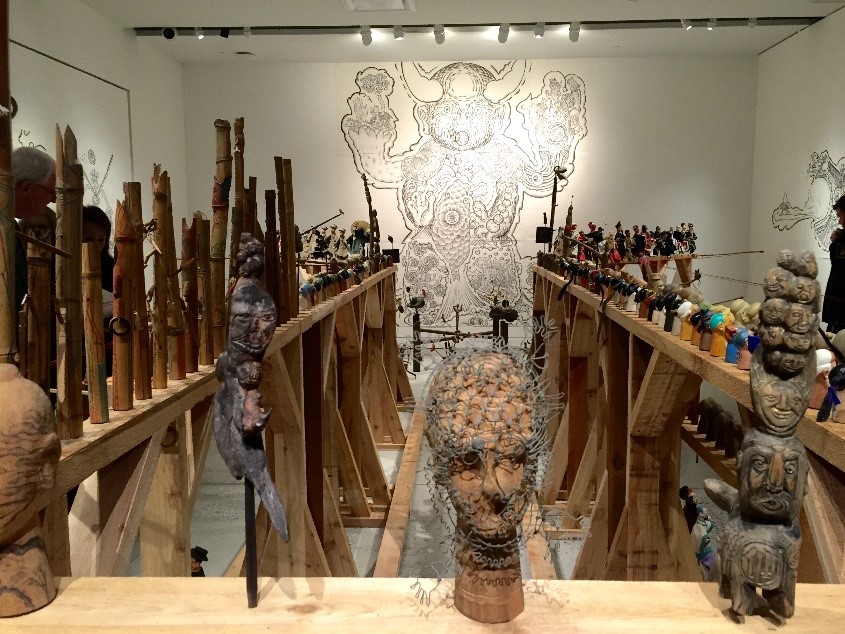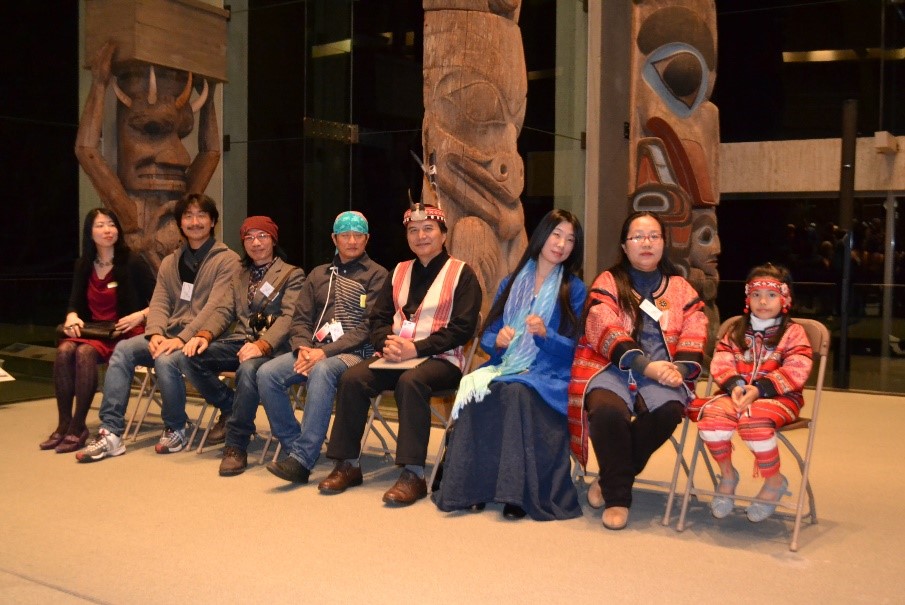Art Exhibition Highlights Religious Tolerance in Taiwan. In a climate of religious intolerance and ideological conflicts worldwide, the exhibition—featuring seven Taiwanese artists, is an example of how freedom of expression and religious tolerance strengthens society by enriching its cultural, political and artistic narratives. Side by side, these seven artists incorporates beliefs from Buddhism, Christianity, Taoism, Confucianism and animism from Taiwan’s aboriginal communities. Their diverse interpretation and mix of materials is a symbol of Taiwan’s integration of hybrid spiritual practices and modern values.
By Jenny C.H. Peng (彭執瑄)
Jenny Peng is a Taiwanese-born, Canadian-journalist. She tweets from @jennypengnow and specializes in international affairs.
The spotlight on Taiwan’s religious landscape could not be any brighter than at the UBC Museum of Anthropology in Vancouver, Canada. Instead of reading or hearing about Taiwan’s diverse spiritual beliefs, visitors get to immerse in the nation’s complex rituals and faiths peacefully flourishing together.
In a climate of religious intolerance and ideological conflicts worldwide, the exhibition—featuring seven Taiwanese artists, is an example of how freedom of expression and religious tolerance strengthens society by enriching its cultural, political and artistic narratives. Side by side, these seven artists incorporates beliefs from Buddhism, Christianity, Taoism, Confucianism and animism from Taiwan’s aboriginal communities. Their diverse interpretation and mix of materials is a symbol of Taiwan’s integration of hybrid spiritual practices and modern values.
Walk down a lane or neighbourhood in Taipei or Tainan, and one will find the imposing Taoist temples next to modern churches and elaborate Buddhist temples. Rather than a clear divide between secular and religious affairs, these places of worship are woven in daily life amid bustling office towers, the rush of city traffic and advance telecommunication networks.

Picture is used with courtesy of the UBC Museum of Anthropology. 







That hybrid of modern values and religious diversity is most evident in the works of artist and graphic designer Walis Labai 瓦歷斯‧拉拜.He is showcasing a five minute video installation titled Invisible Project: Whispering with Spirits. Labai alters portraits of indigenous peoples he has collected over years and projects them onto natural landscapes such as forests, waterfalls, and cliffs. “As a half-indigenous person, my spirit and knowledge has been shaped by Han Chinese culture, yet I can still express the natural wisdom of my mother’s culture,” writes Labai, who has roots in the Seediq aboriginal community. “I have reclaimed the tools of the dominant culture (or Western industrialized society), such as digital technologies, to create my works.”
The exhibition titled (In)visible: The Spiritual World of Taiwan Through Contemporary Art, features works by Anli Genu 安力‧給怒, a Christian pastor and Atayal Aboriginal from Jianshi, Hsinchu County. Using oil and bamboo on canvas, Genu urges each person and the Atayal peoples to re-examine the meaning of the cross in their own lives. “Within the changing flow of history,” writes Genu, “such external markers are beautiful but inevitably transient, like passing clouds. Yet that which is invisible to the eye remains in the background…”
Upon entering the exhibition, one is engulfed curtains of water fairies made of paper draping over canopies and tree-like monuments by Taipei artist Chiu Yu-Wen 邱雨玟. Wen’s projects are an exploration of femininity using materials that are weightless and fragile. “To me, the art of paper cutting is a form of ritualized destruction that allows for the creation of new life…as viewers move freely through my work, they are immersed in the play of shimmering lights and shadows,” writes Wen. “It is a metaphor for re-entering the mother’s womb to meet oneself in a realm of deep memory, at the center of one’s universe.” She is also proud to have the public participate in paper cutting through workshops prior to the launch.
The works of Li Jiun-Yang 李俊陽 defies artistic genres. It’s easy to see the performer in him through his bold, and expressive creations. Born into a family of movie billboard painters, the Taitung native incorporates wood carving, painting, wire sculpture, graffiti, puppetry and experimental theatre. “He pursued his own unique path in the arts at a time when American culture was gaining influence over Taiwanese art. Rather than look abroad, he drew inspiration from the local handmade arts to express the intangible ideals of Taiwan’s folk culture.”
Among the seven renowned artists are Yuma Tairu 尤瑪‧達陸, Tu Wei-Cheng 涂維政, and Charwei Tsai 蔡佳葳. Spiritual life in Taiwan is unlike any other place in the world. Throughout history, Taiwan has had to adapt to the occupation of the Chinese, Portuguese, Dutch, Spanish and Japanese peoples. With each secession, different faiths and practices have remained and peacefully incorporated into a unique fabric of spiritual life in Taiwan. Not only is religious co-existence possible, but the Taiwanese culture is an example of a how spiritual plurality is integral to a thriving society.
The exhibition runs until April, 2016.

